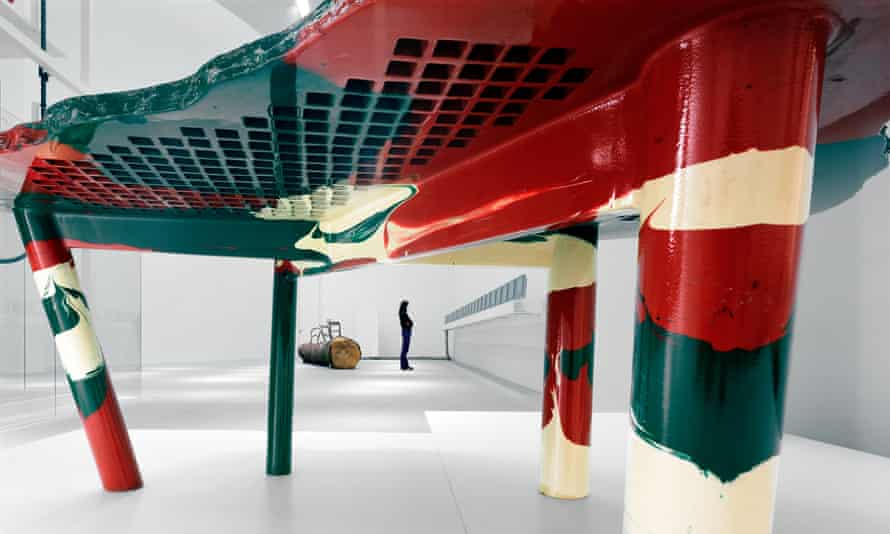Judith Csiki is an art historian and curator at Sammlung Moderne Kunst in the Pinakothek der Moderne, focusing on contemporary art from the Middle East and east Asia
Food
One of my favourite restaurants is Schumann’s bar, which offers classic cocktails and a canteen-style reduced menu of five or six dishes, including Bavarian potato salad and steak. Even late at night, when the kitchen has closed, they serve a “TV plate” with German bread, cheese, ham and pickles. In summer you can sit out front, facing the busy Ludwigstrasse, or in the back, looking over the Hofgarten, a beautiful retreat which was part of the former royal residence.
Bratwurst Glöckl, near the Frauenkirche cathedral, serves traditional fare, such as Kaiserschmarrn (fluffy shredded pancake with rum-soaked raisins). Even if you just want a beer, they have one of the last of the so-called Stehausschank (standup bars) in the city centre. And Soy, opposite Massmannpark, serves great Vietnamese vegan food.

Inspiration
The Kunstareal – art district – is an area with outstanding museums such as the Glyptothek (Greek and Roman sculptures), the Lenbachhaus (Munich painters), the Museum Brandhorst (contemporary art), and of course the three Pinakothek museums. In the Alte Pinakothek you’ll find great works, such as Albrecht Dürer’s Self-Portrait from 1500. While the Neue Pinakothek is being renovated, it also houses works by Gauguin, Klimt and Van Gogh.
The Pinakothek der Moderne features work by Adnan, Beckmann, Claerbout, Flavin, Neshat, Sander and Palermo. Since the two universities are close by, there are many cafes and restaurants in this neighbourhood, plus the Words’ Worth and Munich Readery English-language bookshops.
Sign up to our Inside Saturday newsletter for an exclusive behind the scenes look at the making of the magazine’s biggest features, as well as a curated list of our weekly highlights.
For a Christmas experience the Bayerische Nationalmuseum has a world-famous collection of nativity scenes made in the Alps and Italy between 1700 and the beginning of the 20th century.
Neighbourhood
Beyond the Kunstareal and universities district, the Glockenbachviertel, south of the city centre by the Isar River, has a lot of beautiful cafes and small shops, and is known for its vibrant nightlife and pub culture. I also like Giesing – home of the TSV 1860 football team and lots of Boazn (small local pubs) – and the Westend, with its multicultural community. If you’re into vinyl, check out Black Wave Records.
Green space
Munich is blessed with lots of beautiful parks, such as the Nymphenburger behind Nymphenburg Castle with all its pleasure palaces. And there is the Englischer Garten, which runs right through the northern half of the city along the River Isar. If you start at Ludwig Maximilian University, there are two ways to go: head north to the “wild” side of the English Garden, where you can walk through fields with grazing sheep.

Head into the park and turn south, and it is busier, with attractions such as the Monopterus (Apollo Temple), the Biergarten am Chinesischen Turm and the famous human-made wave popular with surfers right next to the Haus der Kunst. Also in the southern half of the city, people swim in the Isar and enjoy a barbecue on the banks in an area called Flaucher.
Nightlife
I enjoy hanging out at the Favoritbar – a down-to-earth, shop-front bar near Munich’s main shopping mile of Kaufingerstrasse – and the High bar, a colourful cocktail bar that plays a lot of hip-hop.Kafe Kult is an underground live music venue a bit further from the centre, while the Blitz club hosts international DJs.
Stay
The Splendid Dollmann boutique hotel (doubles from €150 room-only) is furnished with 18th- and 19th-century antiques. It has a bar, a lovely garden, and is handy for the Englischer Garten, main sights and museums.



